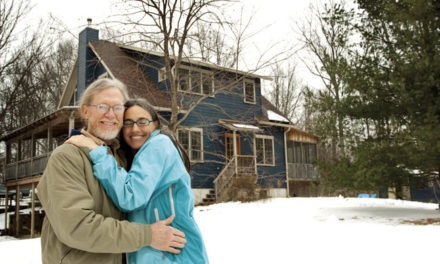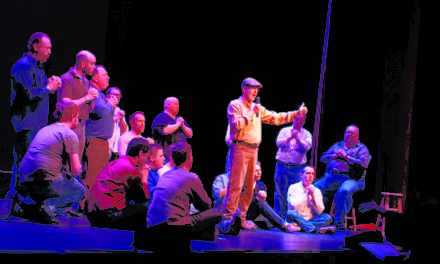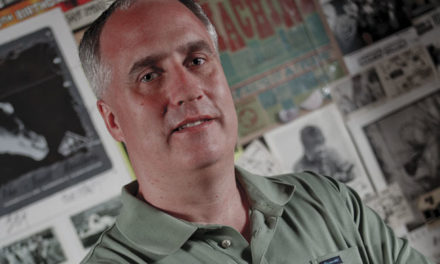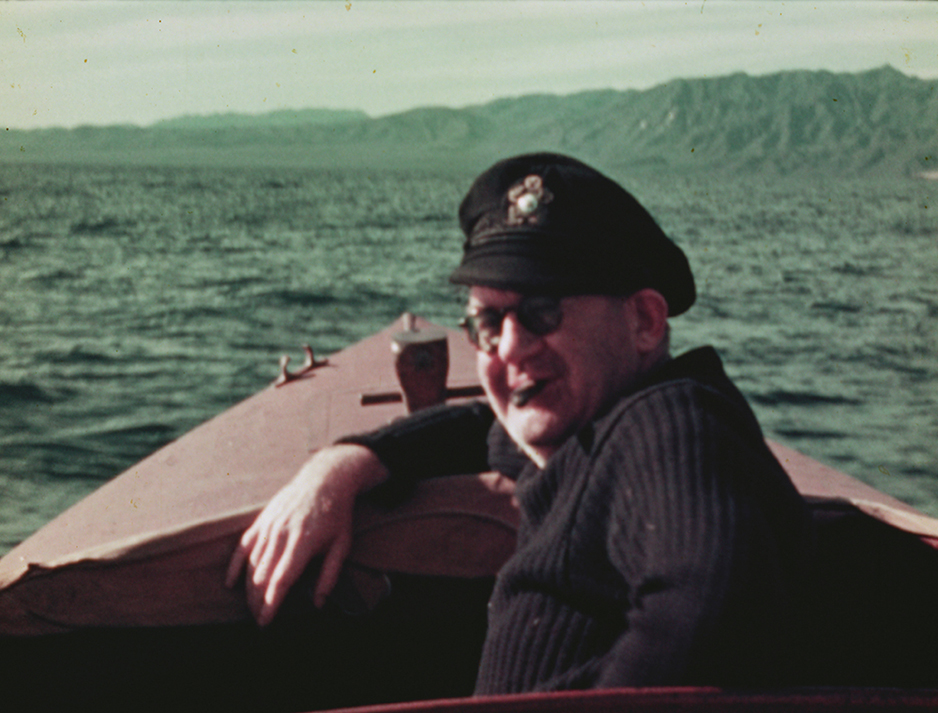
A still, taken from one of Ford’s home movies, of him on his boat, Araner, off the coast of Mazatlan, Mexico. All photos courtesy of Indiana University Lilly Library’s John Ford Collection.
BY STEPHANIE VON HIRSCHBERG
In December 2016, the Lilly Library at Indiana University made news when it received two more Oscars won by legendary film director John Ford. The library now has four of the six Academy Awards earned by Ford, who died in 1973.
But perhaps the most precious gems in the library’s John Ford Collection are a series of home movies, most of them shot by the famed director himself. Filmed in Kodachrome, the 10- to 14-minute reels offer rare glimpses of Ford’s intimate Hollywood coterie. There’s a young John Wayne hanging out on Ford’s boat, Araner, during pleasure trips to Mexico in the 1940s. “He’s in his swim trunks,” says Rachael Stoeltje, director of IU Libraries Moving Image Archive. “People are fishing, catching marlins.”
The reels include footage of film stars Maureen O’Hara and Ward Bond. In one, Henry Fonda is caught sleeping. “There’s this gorgeous sunset, and the light is perfect,” says Stoeltje. “Ford’s home movies are very well done!”
The library acquired the home movies—33 in total—when they purchased The John Ford Papers from Ford’s grandson and biographer, Dan Ford, in 1982. The collection came with reams of correspondence, scripts, photographs, production materials, and 11 Hollywood films, including The Informer (1935) and How Green Was My Valley (1941).
At the time, the Lilly Library was already home to the Orson Welles Materials (retired Indiana University professor James Naremore had published a Welles biography, now in its third revised edition). “There’s a domino effect,” explains Stoeltje. Relationships build and word gets around. Directors Peter Bogdanovich and John Boorman subsequently deposited their materials at the Lilly Library as well.
Scholars and historians have traveled from as far away as Japan to study the Ford collection, which is full of quirky tidbits. A letter from the Stern Film Co. in 1917, when Ford was 23, reads: “Dear Mr. Ford/Sorry to inform you that we will have to dispense with your services temporarily but will be glad to reinstate you very shortly. This notice takes effect from February 3rd on.”
In March, three of Ford’s home movies received their first public viewing at the international Orphan Film Symposium in Paris, France, which is dedicated to studying neglected moving images. Old film decays, but Ford’s footage has been rescued through film-to-film preservation. “You’re making a new negative and then a new film print,” explains Stoeltje. It’s a costly process—$7,400 for all three, funded by a National Film Preservation Foundation grant. For film buffs, however, the cultural value of these images is priceless.
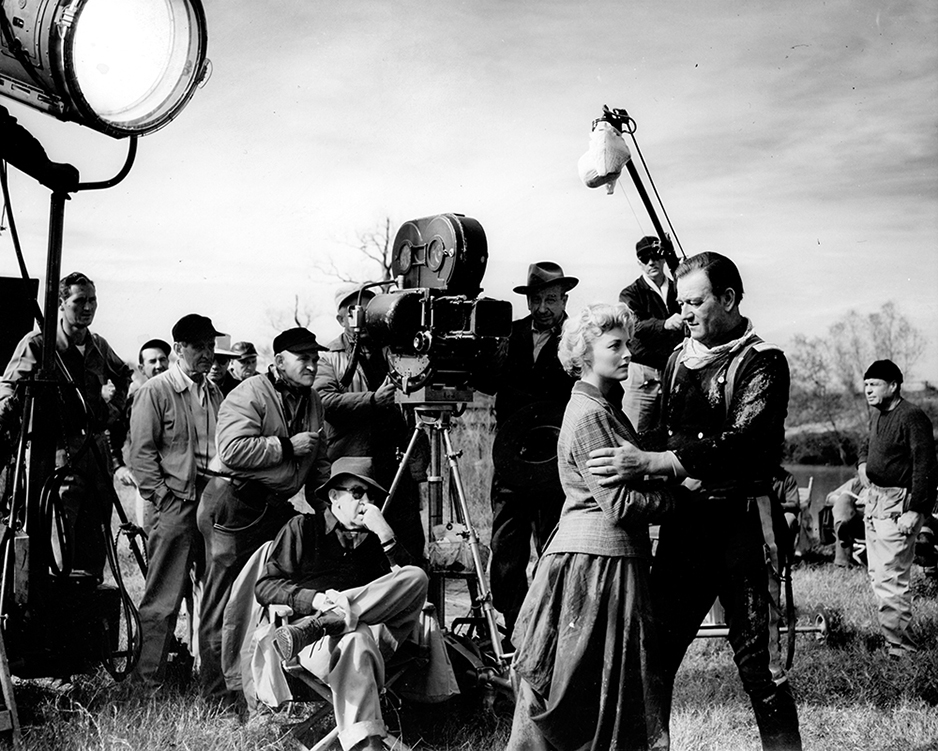
(left) A still of Mazatlan, Mexico, taken from one of Ford’s home movies. (right) Director John Ford (seated, center) directs John Wayne and Constance Towers during filming of the 1959 film ‘Horse Soldier’.
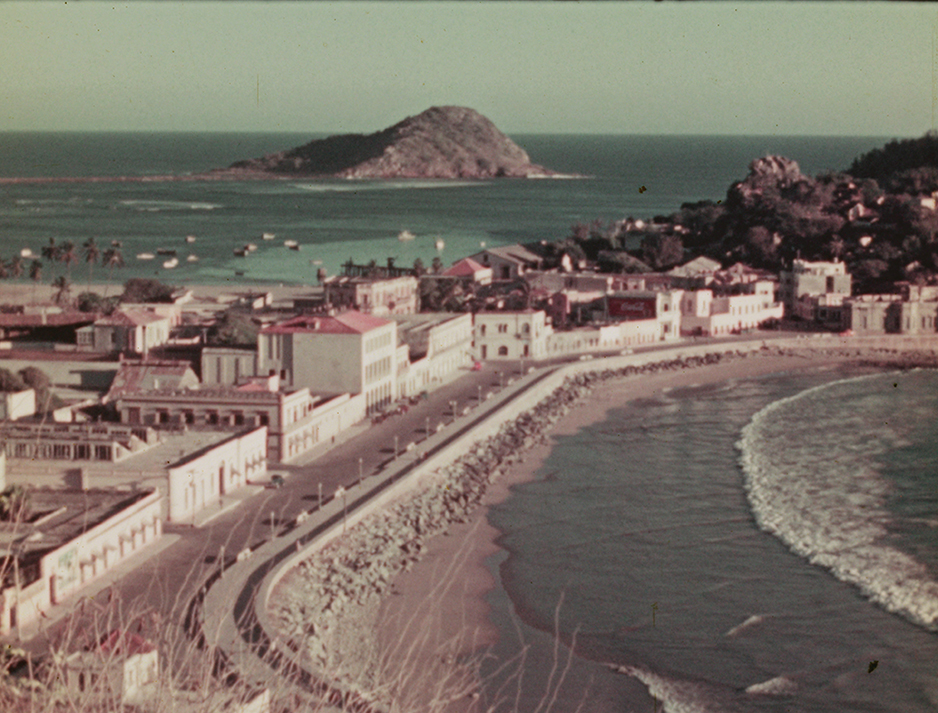
A still, taken from one of Ford’s home movies, located off the coast of Mazatlan, Mexico. All photos courtesy of Indiana University Lilly Library’s John Ford Collection.



